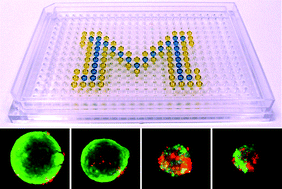Scientists in the Netherlands have developed and tested a new method that uses Raman spectroscopy to quickly identify harmful bacteria in drinking water. This could prevent contaminated drinking water from making people ill by detecting deadly bacteria before it ever reaches the tap.

Many of the standard methods used to test water quality rely on selective plating and enzyme activity tests which take a long time to get results. ‘The bottleneck between collection and results is because microbes need time to grow, or nucleic acids need time to be processed,’ says Jack van de Vossenberg, from the KWR Watercycle Research Institute, who led the research.
To read the full article please visit Chemistry World.
Identification of bacteria in drinking water with Raman spectroscopy
Jack van de Vossenberg, Heli Tervahauta, Kees Maquelin, Carola H. W. Blokker-Koopmans, Marijan Uytewaal-Aarts, Dick van der Kooij, Annemarie van Wezel and Bram van der Gaag
Anal. Methods, 2013, Accepted Manuscript
DOI: 10.1039/C3AY40289D



















